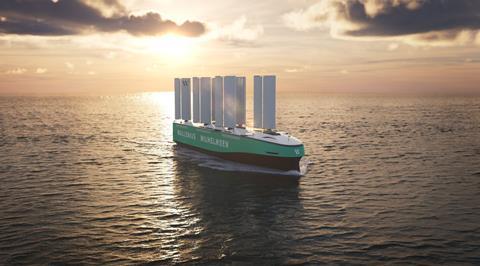Wallenius Wilhelmsen and its project partners have secured EU research funding to the tune of EUR9 million (USD9.7 million) to support the construction of the wind-powered ro-ro vessel Orcelle Wind.

The shipping company unveiled Orcelle Wind as one of its latest sustainability initiatives back in 2021, as HLPFI reported here. During June 2022, Knud E. Hansen joined the project as naval architects.
The grant will be divided between the 11 partners on the project. Together, the partners cover all aspects of wind propulsion technology – including weather routing, vessel design, supply chain orchestration and crew training to test rig installation on an existing vessel. The project’s scope is to make the Orcelle Wind ready for commercial trading.
“The EU funding project is based on a collaborative approach – we need strong partners to lead the way to zero emissions as soon as possible,” said Roger Strevens, vice president global sustainability at Wallenius Wilhelmsen. “We are proud to have a group of the best technical, operational, and academic partners, as well as one of our key customers, for the project. All have committed to working together to help make Orcelle Wind a reality.”
Measuring 220 m-long, the ro-ro vessel will have a capacity for over 7,000 cars and will be capable of carrying breakbulk and rolling equipment. It will be the first vessel from the Oceanbird concept. According to Wallenius Wilhelmsen, that concept shows that it is theoretically possible to reduce emissions from vessels by up to 90 percent if all emissions-influencing factors are aligned.
Niclas Dahl, managing director at Oceanbird, said: “The Oceanbird concept was developed through a partnership approach. We have seen the strength of gathering people from different sectors and companies to cover all perspectives. By working together, we will bring the Orcelle Wind project to life - and by that - take a huge step towards truly sustainable shipping.”
An important part of the Horizon Europe funding project is installing the wing sail test rig on an existing Wallenius Wilhelmsen vessel during mid-2024.
















